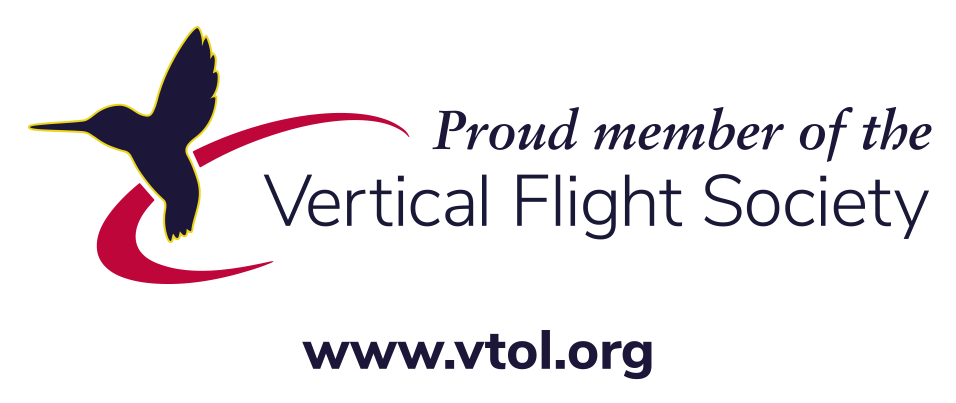Transformative Vertical Flight Workshop: A Retrospective
By Virginia Stouffer, AURA Network Systems Industry Liaison
The 11th Annual Electric VTOL Symposium, held at the Santa Clara County Convention Center from Feb. 6-8, was nothing short of electrifying! Co-hosting the Decennial Aeromechanics Specialists Conference, this three-day extravaganza was a whirlwind of innovation and collaboration that left attendees buzzing.
From NASA to JAXA, from ONERA to AFWERX, the event was a magnet for top minds in the industry, including representatives from the US Army, TU-Delft, TU-Singapore, and scores of AAM manufacturers and operators. The symposium was also graced by the presence of numerous brilliant graduate students eager to dive into the future of flight.
Plenary sessions crackled with anticipation as speakers unveiled tantalizing glimpses of the groundbreaking engineering achievements of the past year. Dan Newman, the new Chief Technology Officer of Honeywell (formerly with VFS), ignited discussions on evolution versus revolution, challenging us all to think through our CONOPS and collaborate more deeply on system engineering.
Collaboration was indeed the name of the game, with sessions highlighting the ongoing partnership between VFS and the General Aviation Manufacturers Association Electric Propulsion and Innovation Committee (GAMA EPIC). Report-outs on GAMA and industry white papers included insights from industry leaders like Chip Palombini of BETA Technologies and Ryan Naru of Joby Aviation, showcasing the strides being made in charging infrastructure and the engineering that would enable adaptations between the charging protocol BETA uses (Combined Charging System or CCS) and Joby’s charging infrastructure.
An opportunity to do some systems engineering on the fly arose on the Autonomous Infrastructure & Operations panel skillfully moderated by Jim Sherman of AIAA. Alongside Mike DiCosola of Drone Industry Systems Corp (DISC), Dr. Jasenka Rakas of UC-Berkeley's NEXTOR, and Ken Freeman and Andy Christian of NASA, we shared our visions for the future of infrastructure, airspace security, and psychoacoustics research.
Jasenka eloquently presented how airports, particularly droneports, should be good neighbors, enabling services while preserving quality of life and coordinating the expansion of infrastructure and services with the community. Vertiport standards and research within the community are methods for evolving those boundaries.
Andy delved deeper into that very topic with a fascinating description of recent acoustic tests conducted by NASA, in which volunteers were subjected to varying numbers and volumes of drone overflight traffic, in order to identify annoyance levels – annoyance increased dramatically more with increasing frequency of intermittent flights, over sound level exposure.
Ken brilliantly showcased how NASA Aeronautics Advanced Air Mobility (AAM) efforts have evolved via the agency’s projects securing data infrastructures for operator-drone, operator-operator, and operator-droneport communications and exchange.
For my part, I previewed the audience with an upcoming paper regarding communications and navigation technologies as well as the procedures for using them in airspace that I am co-authoring with GAMA and coordinating with AUVSI and AIA. Secondary sources of navigation information are needed for both small package delivery and for air taxis, particularly when encountering GPS signal failures. And even with pre-programmed route information, a command-and-control interface with a pilot supervisor is needed to encapsulate the low-frequency unexpected events, such as severe weather and contingency operations in the event of equipment failure. While cellular wireless is a likely connection for small UAS traveling under 400 feet of altitude, air taxis will use dedicated air-to-ground links. Finally, small drone manufacturers have been asking for an allocation to conduct vehicle-to-vehicle (V2V) coordination, but a lot of necessary work remains to build consensus and engineer an answer.
Mike’s presentation on residential and commercial infrastructure incorporating small package drone delivery and air taxi operations – all door-to-door – was nothing short of breathtaking. DISC’s approach to breaking ground on new infrastructure (residential houses with landing pads in 2024 followed by commercial drone ports in 2025) that already incorporates AAM embraces the concept of learning how to retrofit from the use of purpose-built, surpassing the retrofit stage.
The symposium closed on a high note with Mandy Nelson of Bristow confirming an embrace of this future, as Bristow augments its largely vertical fleet with large cargo and air taxi electric vertical flight aircraft currently navigating certification processes. It was a fitting finale to an event that showcased the boundless potential of transformative vertical flight.
As we look ahead to the 12th Transformative Vertical Flight Workshop, one thing is clear: the flight path we are on is bringing some of the best and brightest together, and I look forward to the progress and achievements expected over this coming year.
In addition to her roles as Industry Liaison and Director of Standards with AURA Network Systems, Virginia Stouffer is actively engaged with several RTCA committees, as well as the SAE AAM Steering Group; she also leads a GAMA Electric Propulsion & Innovation Committee subpanel and two American Institute of Aeronautics and Astronautics (AIAA) Subcommittees on AAM and Electric Propulsion.


